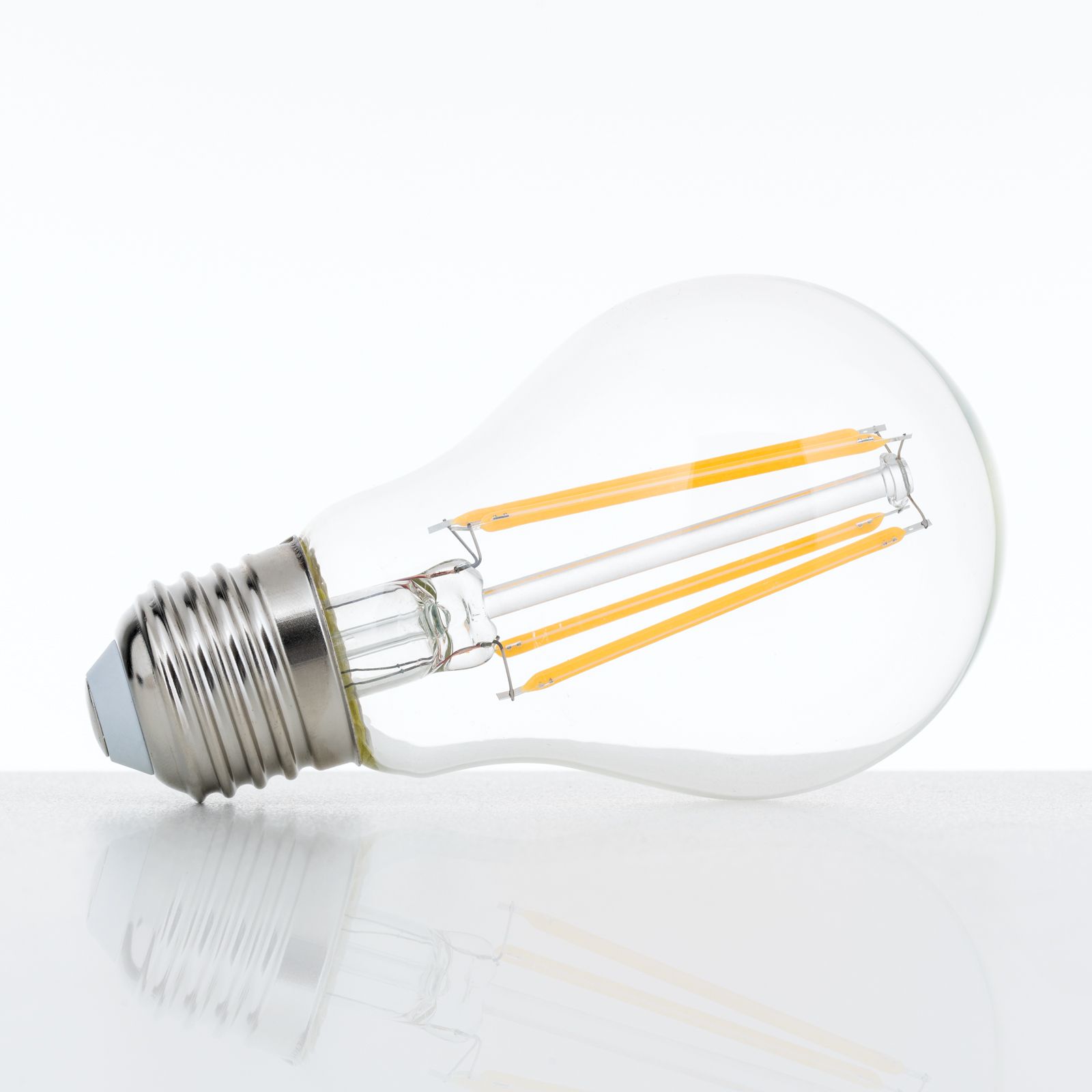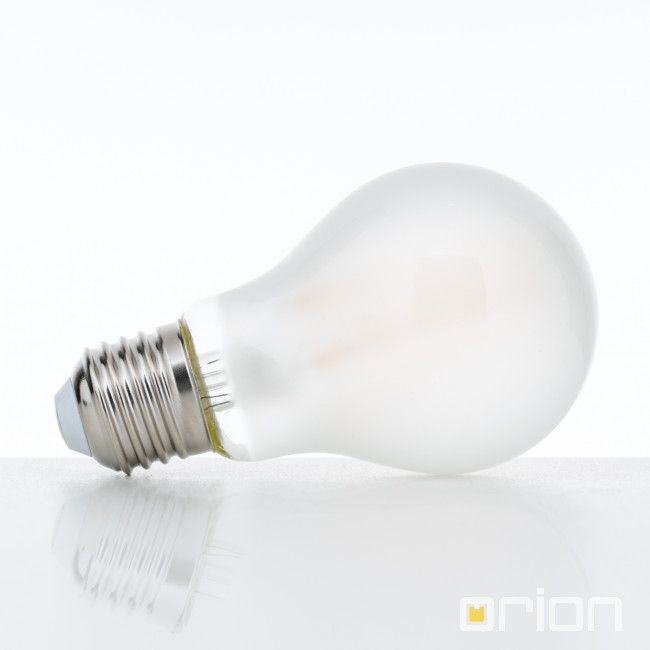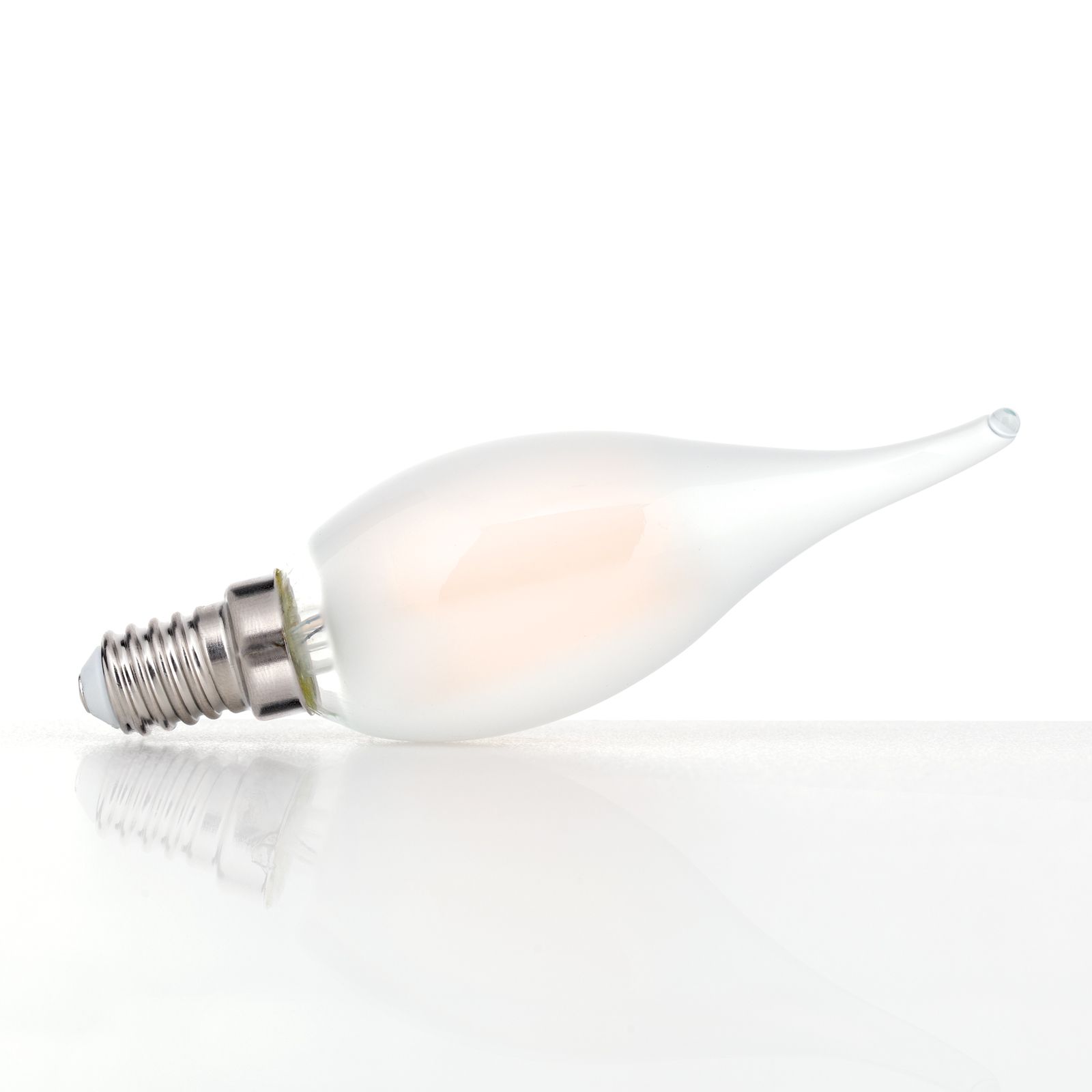With our little guide, you'll become an expert on luminous efficacy, energy efficiency and light color. So you can find your new favorite lamp or your perfect replacement illuminant that meets your exact requirements.
Lumen - amount of light
Lumen is a unit of luminous flux. In light bulbs, it is a measure of how much light a bulb emits. The more lumens, the higher the light quantity of a lamp.
Comparison of incandescent bulb with LED of the same brightness:
| incandescent bulb | LED | lumen |
| 25 W | 2 W | 200 lm |
| 40 W | 4 W | 400 lm |
| 60 W | 7.2 W | 720 lm |
| 100 W | 14 W | 1400 lm |
Lux - brightness on one square meter
The numerical value lux describes the illuminance of a light source in relation to the surface on which the light impinges. In other words. The illuminance Lux is the measure of the brightness for light hitting a surface. This can be the tabletop but also the floor. Lux is measured with a luxmeter.
One lux is one lumen per square meter: 1 lx = 1 lm/m2
How much brightness do you need?
There are guideline values for the optimal brightness in different rooms. The following is a recommendation for your home:
- Kitchen: about 280 lumens per square meter (lm/m2).
- Bathroom: about 280 lm/m2
- Bedroom: about 140 lm/m2
- Living room: about 140 lm/m2
- children's room: about 140 lm/m2
- study: about 280 lm/m2
- hallway: about 140 lumen lx lm/m2
And what does this mean for you?
Here is an example: You have a 25 square meter living room and need a pleasant basic illumination? Then you need a total of about 3500 lumens. You can achieve this via a single lamp or even several, as they can add up the luminous flux.
The calculation:
25m2 x 140 lm = 3500 lm
25m2 x 140 lm = 3500 lm
Rather let calculate?
Here you find the link to a useful calculator.
Lumen & Lux
Lumen is the unit for luminous flux, this indicates how much visible light is produced.
Lux is lumens per square meter.
Lumen to Watt - Luminous efficiency & economy
The unit watt describes the energy consumption of a lamp and is not a unit of measurement for light. The numerical value in watts indicates how much electrical power the lamp consumes.
The luminous efficacy of a lamp is measured in lumens per watt (lm/W) and provides information about its energy efficiency. The luminous efficacy indicates how much energy is converted into light. The higher the value, the more efficient a light source can be classified. Luminous efficacy - the ratio of "lumens to watts" - is thus a measure of the economic efficiency of a lamp.
To illustrate, here is a comparison of the luminous efficacy of an incandescent bulb, an energy-saving lamp and an LED lamp:
| lamp type | luminous efficacy | energy consumption for 700 lm |
| Incandescent lamp | 10 to 15 lm/W | 60 W |
| Halogen lamp | 50 to 80 lm/W | 12 W |
| LED lamp | 60 to 160 lm/W | 8 W |
Efficiency of incandescent lamp versus LED lamp
- So for an incandescent lamp, I need 60W to get 12-17 lumens.
- For an LED lamp, on the other hand, I only need 8W to get 60- 160 lumens.










